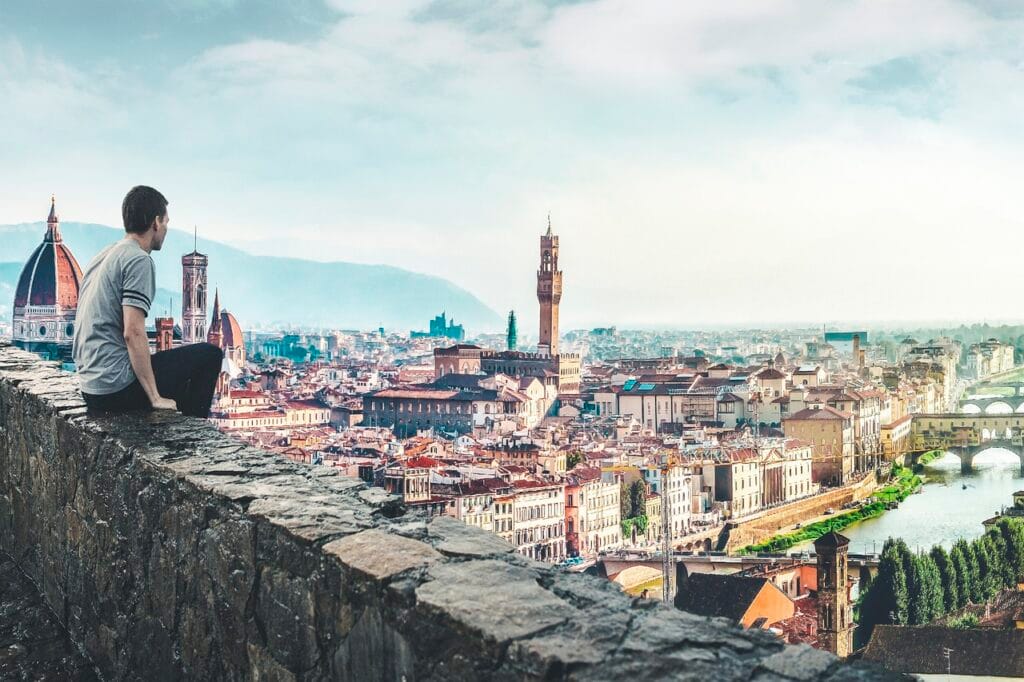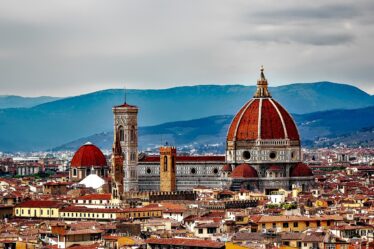

Barberini Legacy in Florence: A Window into Power and Faith
Barberini in Florence is more than just a historical tale—it’s a journey through stone, symbol, and transformation. Nestled at the crossroads of Borgo Pinti and Via della Colonna in Florence, a grand 17th-century window silently tells a compelling story of faith, power, and reinvention. What appears at first glance to be a decorative architectural element is, in fact, a striking witness to a chapter of religious and political evolution in the city’s heart.
From Tailors to Popes: The Rise of the Barberini
To understand the Barberini Legacy in Florence, we must first look back at the family’s origins. Originally known as the Tafani, the Barberini were skilled merchants and tailors, renowned for their craftsmanship in textiles. Their original coat of arms bore symbols of this humble yet industrious trade: a blue field dotted with three horseflies (tafani) and a pair of scissors. However, this emblem would not remain unchanged for long.
When Maffeo Barberini rose to become Pope Urban VIII, the family’s image underwent a powerful metamorphosis. Eager to distance themselves from their mercantile past, the Barberini replaced the scissors and horseflies with bees—symbols of diligence, nobility, and spiritual authority. The bees would become a lasting icon of their influence. Still visible across churches, monuments, and papal regalia in both Barberini Legacy in Florence and Rome.
A Sacred Gift: The Carmelite Sisters and Their New Home
Significantly, the Barberini’s power reached far beyond symbolism. Thanks to their wealth and influence, they facilitated the relocation of the Carmelite nuns from the Cestello convent. Went to a more prestigious location at the very corner of Borgo Pinti. This religious transformation was not only a testament to their generosity but also a strategic move to reinforce the Barberini Legacy in Florence .
Meanwhile commemorative marble plaque was placed beneath the window to celebrate this event—a tribute to Pope Urban VIII and his relatives, who orchestrated this monumental change. The large window above is not merely decorative; it is a Baroque “mostra” or display window, framed with staggered rectangular stones, offering a spiritual perspective that connects the divine to the earthly realm. It invites the sky to bear witness to the unfolding narrative of power and piety.
Echoes in Rome: A Controversial Legacy
Meanwhile, in Rome, the Barberini name evoked both admiration and criticism. Their aggressive urban reforms and architectural ambitions led to the famous satirical quote:
“Quod non fecerunt Barbari, fecerunt Barberini”
(“What the barbarians did not do, the Barberini did.”)
This statement reflects the complex duality of the family’s legacy—a mix of grandeur and destruction. Their thirst for renewal often came at the cost of ancient monuments, further cementing their controversial mark on Italian history.
Standing Still in Time
Today, anyone walking by the corner of Borgo Pinti and Via della Colonna can pause and gaze up at the Barberini Legacy in Florence. Beneath the weathered stone and fading inscriptions lies a powerful message. That buildings, like families, are shaped by ambition, transformed by faith, and remembered through history.
Further Reading and References
- Pope Urban VIII and the Barberini Family – Encyclopædia Britannica
- Barberini Bees and Symbolism – Italy Magazine
- The Carmelite Order: History and Influence – The Carmelite Order Official Site



